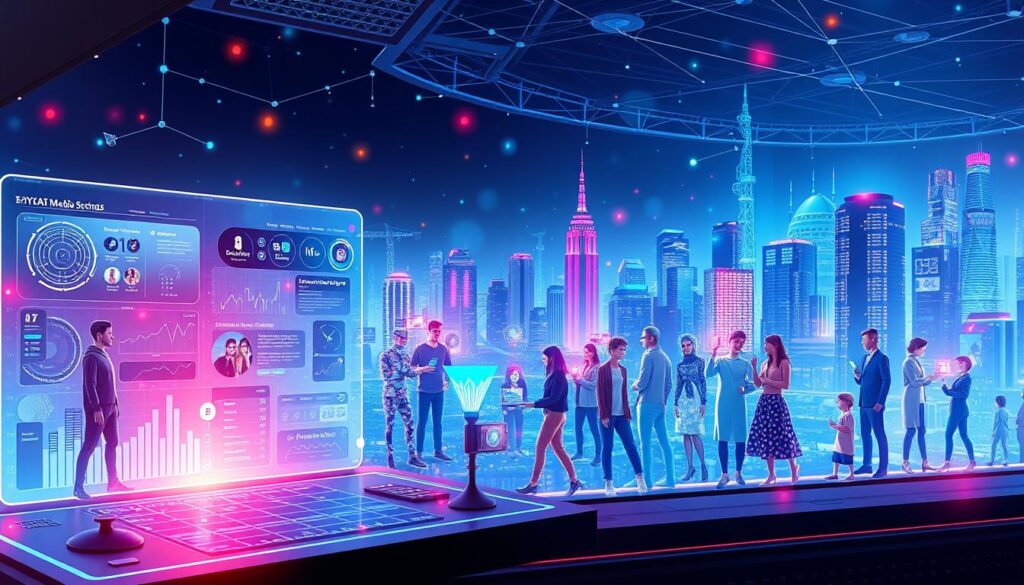Blog
10 AI Hacks for Content Repurposing (Turn One Blog Post into 10 Assets)

Maximizing content potential is crucial in today’s digital landscape. With the rise of AI content repurposing, creating multiple assets from a single blog post has become easier and more efficient.
By leveraging Artificial Intelligence, businesses can breathe new life into their existing content, reaching a wider audience and improving their overall content strategy. This approach not only saves time but also enhances the ROI of their content creation efforts.
Repurposing content with AI hacks can help you stay ahead of the competition and make the most out of your content.
Key Takeaways
- Discover how to maximize your content’s potential with AI.
- Learn the benefits of repurposing content for your business.
- Understand how AI can enhance your content creation strategy.
- Find out how to create multiple assets from a single blog post.
- Improve your content’s ROI with AI-driven repurposing.
The Power of Content Repurposing with Artificial Intelligence (AI)
In the ever-evolving landscape of digital marketing, content repurposing has emerged as a crucial strategy for maximizing ROI. As businesses continue to produce a high volume of content, finding innovative ways to breathe new life into existing material is becoming increasingly important.
Repurposing content not only extends the lifespan of your material but also broadens its reach across different platforms and audience segments. By doing so, it allows businesses to maximize their content’s potential, ensuring that their message is conveyed effectively to a wider audience.
Why Repurposing Content Matters for Your Digital Strategy
Repurposing content is vital for a robust digital strategy. It enables businesses to:
- Amplify their message across multiple channels
- Enhance their SEO efforts by providing fresh content for search engines
- Engage different segments of their audience with varied content formats
According to a recent study, repurposing content can lead to a significant increase in engagement and a reduction in content creation costs. As highlighted in a report, leveraging AI in content repurposing can streamline the process, making it more efficient.
| Benefits of Content Repurposing | Impact on Digital Strategy |
|---|---|
| Increased content lifespan | Enhanced brand visibility |
| Better audience engagement | Improved SEO rankings |
| Cost savings | More efficient content creation |
How AI is Revolutionizing Content Repurposing
AI is transforming the content repurposing landscape by providing tools that can analyze, adapt, and recreate content for various formats and platforms. This not only saves time but also ensures that the content is optimized for its intended use.
For instance, AI can help in converting blog posts into social media carousels, infographics, or even video scripts. As content strategists are now able to focus on creativity, while AI handles the more mundane tasks of content adaptation.
“AI is not just a tool; it’s a collaborator that enhances human creativity by handling the heavy lifting in content repurposing.”
By embracing AI in content repurposing, businesses can stay ahead of the curve, ensuring their content strategy is both effective and efficient.
Essential AI Tools for Your Content Repurposing Arsenal
AI tools are revolutionizing the way we approach content repurposing. By leveraging these tools, content creators can significantly enhance their productivity and output diversity.
Text-Based AI Tools for Content Transformation
Text-based AI tools are designed to manipulate and transform written content into various formats. Tools like WordLift and Content Blossom use AI to improve content readability and suggest alternative phrases or sentences.
- AI-powered content rewriting
- Automated summarization
- Language translation
These tools enable users to quickly adapt content for different audiences or platforms.
Visual and Audio AI Tools for Multi-Format Creation
Visual and audio AI tools expand the possibilities for content creators by enabling the production of multimedia content. Tools such as Lumen5 and InVideo use AI to create engaging videos from text-based content.
| Tool | Functionality |
|---|---|
| Lumen5 | AI-driven video creation |
| InVideo | Automated video editing |
By integrating these AI tools into their workflow, content creators can not only save time but also enhance the quality and diversity of their content.
Hacks #1-3: Transform Blog Posts into Visual Content Assets
The power of AI in content repurposing lies in its ability to turn written content into captivating visual assets. By leveraging AI tools, you can transform a single blog post into multiple visual elements that capture your audience’s attention across various platforms.
Hack #1: Creating Social Media Carousels with AI
Social media carousels are an engaging way to present information on platforms like LinkedIn, Instagram, and Facebook. AI-powered tools can help you create these carousels by automatically generating visually appealing slides from your blog content.
To create a social media carousel using AI, start by selecting a tool that integrates with your social media platforms. Then, upload your blog post content to the tool, and let the AI analyze and format it into carousel slides. You can customize the design, adding images and text overlays as needed.
Hack #2: Generating Infographics from Blog Data
Infographics are a powerful way to present complex data in an easily digestible format. AI can help generate infographics by analyzing your blog post data and suggesting visual representations.
To generate an infographic, use an AI tool that specializes in data visualization. Upload your data or blog post content, and the AI will create a visually appealing infographic. You can then customize it to fit your brand’s style and messaging.
Hack #3: Converting Blog Content into Video Scripts and Animations
Video content is increasingly popular, and AI can help you create video scripts and animations from your blog posts. This hack involves using AI to analyze your content and generate a script, which can then be turned into an animated video.
To convert your blog content into a video, start by using an AI tool to generate a script. Then, select an animation style that fits your brand, and let the AI tool create the animation. You can customize the output, adding voiceovers, background music, and other elements to enhance engagement.
Hacks #4-6: Repurpose Content for Audio and Interactive Formats
Repurposing content with AI doesn’t just stop at visual formats; it can also breathe new life into audio and interactive experiences that captivate your audience. As we explore hacks #4-6, you’ll discover how to leverage AI for creating engaging audio content and interactive elements that enhance user experience.
Hack #4: Developing Podcast Episodes from Written Content
Transforming written content into podcast episodes is a fantastic way to reach audiences who prefer listening over reading. AI tools can help convert blog posts into well-structured podcast scripts. For instance, tools like Descript or Podcastle use AI to generate natural-sounding voiceovers from text, allowing you to create podcast episodes quickly.
To get started, simply input your written content into the chosen AI tool, adjust the settings according to your preference, and let the software do the rest. You can further enhance your podcast by adding background music or sound effects, making it more engaging for listeners.
Hack #5: Creating Interactive Quizzes and Assessments
Interactive quizzes are an excellent method for boosting user engagement and providing value to your audience. AI can help generate quiz questions based on your written content, making it easier to create personalized assessments. Tools like Qzzr or Interact enable you to craft quizzes that not only entertain but also educate your audience.
To create an interactive quiz, start by identifying the key points from your blog post that you want to test. Then, use an AI quiz generator to create questions and answers. You can customize the quiz to fit your brand and make it more appealing to your audience.
Hack #6: Generating Email Newsletters with AI
Email newsletters remain a powerful tool for connecting with your audience, and AI can simplify the process of creating them. By repurposing your blog content into newsletters, you can keep your subscribers informed and engaged. AI tools like Mailchimp or Constant Contact offer features that help you design and personalize your newsletters.
To generate an email newsletter, input your content into the AI tool, select a template, and customize it according to your brand’s style. AI can also help in segmenting your audience and personalizing the content for better engagement.
| Hack | Description | AI Tool Example |
|---|---|---|
| Hack #4 | Developing Podcast Episodes | Descript, Podcastle |
| Hack #5 | Creating Interactive Quizzes | Qzzr, Interact |
| Hack #6 | Generating Email Newsletters | Mailchimp, Constant Contact |
Hacks #7-8: Create Long-Form and Presentation Content
By leveraging AI for content repurposing, you can efficiently produce long-form content and engaging presentations that captivate your audience. This approach not only enhances your content strategy but also maximizes your reach across different platforms.
Hack #7: Developing Downloadable Guides and E-books
Transforming blog posts into comprehensive guides or e-books is a powerful way to provide value to your audience. AI tools can help you organize and expand your content, making it more suitable for long-form formats. Key benefits include increased engagement, improved brand authority, and the potential for lead generation.
To create a downloadable guide or e-book, start by selecting a relevant blog post that has the potential to be expanded. Use AI to research additional information, statistics, and examples that can enhance the content. Then, organize the material into a coherent structure, and finally, design the layout to make it visually appealing.
Hack #8: Creating AI-Generated Webinar Presentations
Webinar presentations are an effective way to engage with your audience and showcase your expertise. AI can assist in generating presentation content, including slides, scripts, and even voiceovers. The advantages of AI-generated webinar presentations include saved time, improved consistency, and the ability to personalize content for different audiences.
To create a webinar presentation using AI, begin by defining the topic and key messages. Then, use AI tools to generate slide content, suggest visuals, and even create a script. Finally, practice your presentation to ensure a smooth delivery.
Hacks #9-10: Optimize for Platform-Specific Content
In the age of digital content, platform-specific optimization is not just beneficial, it’s essential. As we continue to explore the myriad ways AI can enhance our content strategy, we turn our attention to adapting content for various platforms and creating engaging chatbot interactions.

Hack #9: Platform-Specific Content Adaptation with AI
Adapting content for different platforms is a crucial step in maximizing your digital reach. AI social media tools can analyze the nuances of each platform, suggesting modifications to optimize your content’s performance. For instance, AI can help transform a detailed blog post into a concise, engaging tweet or a visually appealing Instagram caption.
According to a recent study, “Content that is tailored to the specific platform performs significantly better than generic content.” This underlines the importance of using AI to understand and adapt to the unique characteristics of each social media platform.
- Identify the core message of your content
- Use AI tools to analyze platform-specific requirements
- Adapt your content accordingly, ensuring it meets the platform’s unique characteristics
Hack #10: Developing Chatbot Scripts and FAQ Content
Chatbots have become an integral part of customer service, providing immediate responses to user queries. Developing effective chatbot scripts and FAQ content is crucial for a seamless user experience. AI can assist in crafting these scripts by analyzing common user questions and generating appropriate responses.
“The future of customer service lies in AI-driven chatbots that can understand and respond to user needs efficiently.”
To develop effective chatbot scripts, consider the following steps:
- Analyze common user queries related to your content or service
- Use AI to generate responses that are both informative and engaging
- Continuously refine your chatbot scripts based on user interactions and feedback
By implementing these hacks, you can significantly enhance your content’s performance across different platforms and improve user engagement through more effective chatbot interactions.
Building Your AI Content Repurposing Workflow
Establishing an effective AI content repurposing workflow is crucial for maximizing your content’s reach and impact. By leveraging AI tools, you can streamline your content creation process, reduce manual labor, and increase productivity. To achieve this, it’s essential to understand the key components of a successful AI content repurposing workflow.
An efficient workflow begins with a well-planned content calendar. By integrating AI into your content calendar, you can automate scheduling, predict engagement, and optimize content performance. This enables you to make data-driven decisions and adjust your strategy accordingly.
Creating an Efficient Content Calendar with AI
To create an efficient content calendar with AI, you should utilize AI-powered tools to analyze your content’s performance and identify trends. This involves:
- Analyzing engagement metrics to determine the best content formats and distribution channels
- Using AI-driven forecasting to predict future content performance
- Automating content scheduling to ensure timely publication
For more insights on creating an AI-driven content repurposing workflow, visit our guide on AI content repurposing.
Measuring Success and Optimizing Your Strategy
To measure the success of your AI content repurposing workflow, you need to track key performance indicators (KPIs) such as engagement rates, website traffic, and conversion rates. By analyzing these metrics, you can identify areas for improvement and optimize your strategy.
Some key strategies for optimizing your AI content repurposing workflow include:
- Continuously monitoring and adjusting your content calendar based on AI-driven insights
- Refining your AI tools to better suit your content needs
- Experimenting with new content formats and distribution channels
By implementing these strategies, you can maximize the effectiveness of your AI content repurposing workflow and achieve your content marketing goals.
Common Challenges and How to Overcome Them
Content repurposing with AI is not without its obstacles, but these can be overcome with the right strategies. As you leverage AI to transform your content, you’ll likely face challenges that require careful consideration.
Maintaining a consistent brand voice is crucial when repurposing content. AI tools can help, but human oversight is necessary to ensure that the tone remains consistent across different formats.
Maintaining Brand Voice Across Repurposed Content
To maintain brand voice, it’s essential to establish clear guidelines for AI tools. This includes:
- Defining the tone and language to be used
- Providing examples of existing content that embody the brand voice
- Regularly reviewing AI-generated content for consistency
Here’s a comparison of strategies to maintain brand voice:
| Strategy | Description | Effectiveness |
|---|---|---|
| Guideline Establishment | Clear guidelines for AI tools | High |
| Content Review | Regular review of AI-generated content | High |
| Example Provision | Providing examples of brand voice | Medium |

Balancing AI Automation with Human Creativity
While AI can automate many aspects of content repurposing, human creativity is still essential for producing high-quality, engaging content. The key is to strike a balance between AI efficiency and human input.
By combining the strengths of AI automation and human creativity, you can produce repurposed content that is both efficient and effective. This balance is crucial for maximizing the potential of AI in content repurposing.
Conclusion: Multiplying Your Content Impact with AI Repurposing
As we’ve explored throughout this article, AI content repurposing is a game-changer for maximizing your content’s reach and effectiveness. By leveraging Artificial Intelligence (AI), you can transform a single blog post into multiple assets, significantly amplifying your content impact.
The 10 AI hacks outlined provide a comprehensive toolkit for repurposing content across various formats, from visual and audio assets to interactive and long-form content. By integrating these strategies into your content workflow, you can efficiently create a diverse range of content that resonates with different audience segments.
Embracing AI content repurposing not only streamlines your content creation process but also enhances your overall digital strategy. As you explore the possibilities of AI-driven content repurposing, you’ll be able to measure the success of your efforts and continually optimize your approach to achieve greater content impact.


